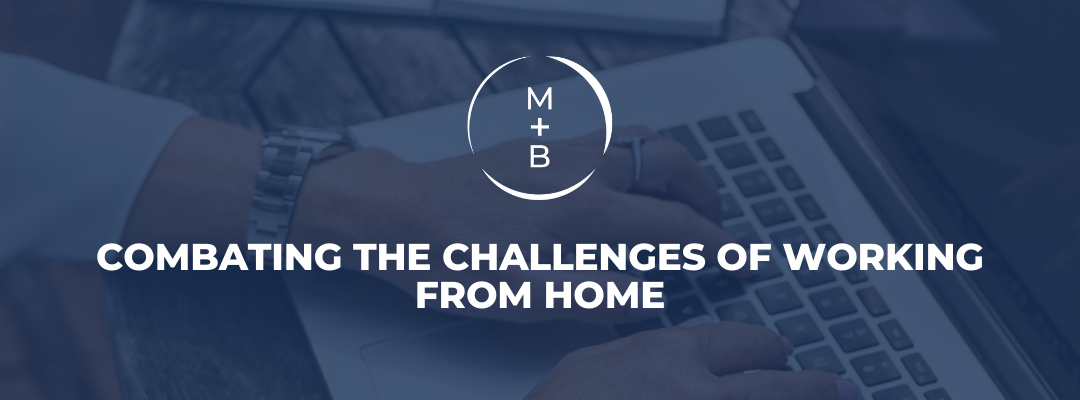Working remotely and working where you live is not as easy as it sounds.
When companies started working from home four weeks ago, it was clear for employers and employees that there were two priorities: maintaining good health and keeping business afloat.
The initial focus was geared toward equipping employees with the necessary technology, tools, and flexibility to successfully work from home for what would ideally only be a short period time. Now, four weeks later, it seems that it will take quite a bit longer before we can return to the normalcy that is working onsite at the office.
At the moment, we are in an unfamiliar work arrangement with new challenges. How do we cope with the uncertainty and fear about the future while maintaining our mental health and engagement when working from home? How do we work in isolation from our colleagues and maintain productivity with family members, children, or roommates that have their own demands and needs?
It is company leadership’s direct responsibility to ensure remote team members feel included and valued. Enabling and promoting a safe and supportive environment for collaboration, creative expression, and growth is the key to maintaining employee engagement. Though the complexity of remote work environments creates obstacles for maintaining employee happiness and productivity, it remains the responsibility of leadership to observe and identify the opportunities for improvement and offer a helping hand to the employees that struggle and need support to perform at their best.
The key is leading by example. Engaging leaders produce engaged employees. When you demonstrate care, open communication, and respect to your team, it encourages the same kind of behaviour within your team. It’s easy to talk about techniques and methods to build remote team engagement, but in reality, all you need to start is a leader that cares about their team. Show them that you appreciate them.
So what can managers do to support their employees? They can show empathy and availability, stay connected with communication and meeting tools, recognize the impact of isolation, and encourage online training. But most importantly, they can show their employees they value them.
How do we cope with the uncertainty and fear about the future while maintaining our mental health and engagement when working from home?
BE EMPATHETIC
Employees will be working from the sanctuary of their home. This brings with it all kinds of challenges, from the White Tennis Shoe Syndrome – finding any distraction more appealing than the current task, to the lure of the fridge, to kids that also happen to be stuck at home.
During remote work meetings, you may come across employees that have recently woken up after a rough night or distracting work spaces with loud background noise. In this new work format, some people will be hyper-productive and others will be wallowing in procrastination and doubt. Managers are not immune to this. In fact, they may feel the pressure more than most.
Everyone responds differently to challenges, so it’s important to ask people how they’re doing and show them that you care. Emphasize the importance of the organization’s mission and how much their contribution counts toward the greater goals. It’s also important to maintain clarity about performance objectives while allowing space to adapt to the new arrangement.
CREATE A CULTURE OF RECOGNITION
Leverage remote work to encourage recognition among peers and leaders alike.
A simple first step is expressing gratitude by saying “thank you.” The next step is public recognition. When teams are distributed geographically, they miss the small wins. Take the opportunity to recognise these wins by broadcasting daily or weekly group updates that are dedicated to good news, gratitude, and success stories.
Some larger companies may congratulate good performance with bonuses, while smaller companies may give a gift as a reward. It does not have to be anything expensive. It may be a nice bottle of wine or a bouquet of flowers to brighten up someone’s new home office. You may consider giving the employee an afternoon off for their good performance, allowing them to spend time with other family members that are also staying inside.
CHALLENGES TO ANTICIPATE
- Maintaining structure
- Have a designated workspace
- Physically distancing ourselves can make us feel disconnected
- Stay connected
- Protect your mental health
- Mute what you have to and follow reliable sources
- Focus on the silver linings
- Personal development
- Offer virtual wellness training
- Mental health check-ins
- Avoid micromanaging
MAINTAIN STRUCTURE
When working from home, it’s tempting to roll out of bed and go straight to the computer. Maintaining structure, especially in mornings, can go a long way in helping people feel calm, cool, and productive. Routine helps us physically and mentally prepare for the day. So, when the alarm goes off, start the day like you would if you were physically going to the office: wake up on time, shower, and get dressed.
Schedule your time. Set regular working hours, including breaks and self-care practices between different tasks. Check in regularly with your manager and colleagues. It’s also very important to continue to respect your limits. Resist the temptation to keep working beyond established work hours.
Know, respect, and share your limits with those around you to avoid burnout.
HAVE A DESIGNATED WORKSPACE
To maximize productivity in a workspace, create a setup that mimics the elements of an actual office. Some essential items may include strong internet connection, good lighting, a comfortable chair, and an inventory of supplies.
As a leader, you can model what an effective remote workspace looks like, especially during video conferences. Try facing a window for natural light, or place a lamp nearby so your team can clearly see you.
Invest in noise-cancelling headphones. This is a great way for you to keep focused on the task at hand. If your workspace is small and difficult to separate “work” from “home,” try practicing simple, everyday habits that can cue the start and end of your work day. Once you’ve finished for the day, try to mentally disconnect from work.
STAY CONNECTED
A lot of people are accustomed to and appreciative of conventional office life where they experience a steady rate of social interactions. The change to remote work as a result of the COVID-19 pandemic might cause a surprising, even if relatively mild, deterioration of mental health.
PROTECT YOUR MENTAL HEALTH
It’s vital that you support your mental health while also protecting your and your family’s physical health during this pandemic. These simple steps will work to maintain positive mental health.
- Turn off email notifications before and after working hours.
- Get sufficient sleep – aim for 7.5 to 9 hours.
- Keep a proper sleep schedule to maintain a feeling of normalcy.
- Eat healthy, stay hydrated, and ensure balanced nutrition throughout your work day.
- Exercise regularly. The gym may be closed, but the outdoors are not; get outside for a daily 20-30 minute walk.
MUTE WHAT YOU HAVE TO AND FOLLOW RELIABLE SOURCES
Almost everybody is guilty of sitting on Twitter all day, waiting for updates with an unhealthy level of anticipation. Be aware of the amount of information you’re consuming, as over consumption can contribute to an unhealthy and overwhelmed state of mind. Take time away from social media and the news, and mute or hide keywords. If you want to keep updated, follow reliable sources of information and turn off notifications for all other sources.
Schedule your time. Set regular working hours, including breaks and self-care practices between different tasks. Check in regularly with your manager and colleagues. It’s also very important to continue to respect your limits. Resist the temptation to keep working beyond established work hours.
PERSONAL DEVELOPMENT
Work is likely to slow down for many people during the pandemic, Work is likely to slow down for many people during the pandemic, which may open the door for other opportunities. Think about what else you or your team can do during this period to develop additional skills applicable to your work. This could involve taking an IT course or learning another language. The key is to do something to keep yourself cognitively active. As a leader, you can offer your staff a course or additional training in a specific area. Every employee wants to develop, and it is in everyone’s interest that the skill level of the company increases. When employers invest in and develop their employees’ skill set, they feel appreciated and become more productive. As well as bolstering long-term employability, lifelong learning improves happiness and cognitive traits like memory.
Think about what else you or your team can do during this period to develop additional skills applicable to your work.
OFFER VIRTUAL WELLNESS
Employees will take time to adapt to a new way of working. Some will take advantage of the extra time and go for walks or sport. Others may lack the motivation to get out of their pajamas.
Encourage employees to:
- Move throughout the day
- Provide them with resources to encourage mindfulness and peace
- Promote healthy sleep habits and discourage working late
- Keep training sessions short and focused
- Encourage the use of self-assessment tools to build personal insight
MENTAL HEALTH CHECK UPS
Whether conducted by leaders, peers, or internal wellness ambassadors, it is worthwhile to schedule mental health check-ins to make sure everyone is coping with the change to remote working.
AVOID MICROMANAGING
For some leaders, it can be tempting to constantly check in and make sure employees are on task while they’re working from home. However, micromanaging a team will only make them feel like they aren’t trusted. Instead, keep communication channels open and allow team members to work autonomously. Rather than micromanaging, collect employee feedback on how they’re feeling.
For example, set up an employee engagement survey to understand the general mood within your remote workforce. Emotions are high right now, and teams are going to take some time to adjust to this change.


